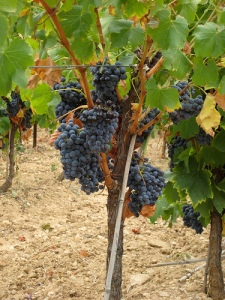 Mmm.
Mmm.
Nothing like that wet dog stench!
What might make a wine get this sort of stink?
That answer in a minute.
First, I’ll explain this series…
As you may know I work at Spring Gate Vineyard. In well under a year we went from zero to being the industry leader in central Pennsylvania with our winery, tasting room, and events.
I went from knowing very little about wine to explaining our wines (about 29 as of now) in detail hundreds of times per week. I’m no expert, but I’ve learned a lot.
I think it might be fun to not just share with you some of the ways to better understand, enjoy, and understand wine for yourself, but also tie in some deeper truths about living and life that go along with viticulture, winemaking, wine appreciation, and enjoyment.
Want to ask a question about wine? Ask away!
Use the voice mail feature! (or leave a comment)
Now about that wet fur stuff…
If your glass or bottle of wine ever is a hint “poochy” smelling, then oxygen is to blame. Other stinky smells that come from oxidized wine are wet newspapers, burned marshmallow, or stewed fruit.
Some oxygen brings out the full aroma (bouquet) of the wine when it is first opened. This is called aerating the wine. That’s why people will swirl a small amount of wine in their glass before they sip it. The smell and taste improve with some air.
But, if wine has been opened for more than a few hours it goes stale. You can get about 24 hours of “not too oxidized wine” if the bottle is sealed and the air is pumped out with a wine pump like this inexpensive one that pays for itself after two uses.
Additionally, a bad seal on the cork might be the problem. Either way, the wine is not unsafe to drink, it is however not very enjoyable, no matter how much of a dog lover you are.
• WINE TIP
Don’t drink wine if it’s brown in color and make sure to not store it in a hot place. Most wines need to be kept around 45-60º depending on the variety. Reds can be a little warmer and whites should stay a little cooler to keep their optimal flavor.
The Life Lesson I learned:
I can get a bit “corked” too, sometimes too, right? Have you ever felt like you’ve been overexposed to other people, too much busyness, and negativity? I have. A little interaction can bring out our great aromas (our best selves), but too much will make us go stale and unpleasant. It’s best to seal ourselves off after a bit and recuperate so we can be more enjoyable to friends and family too. :)

